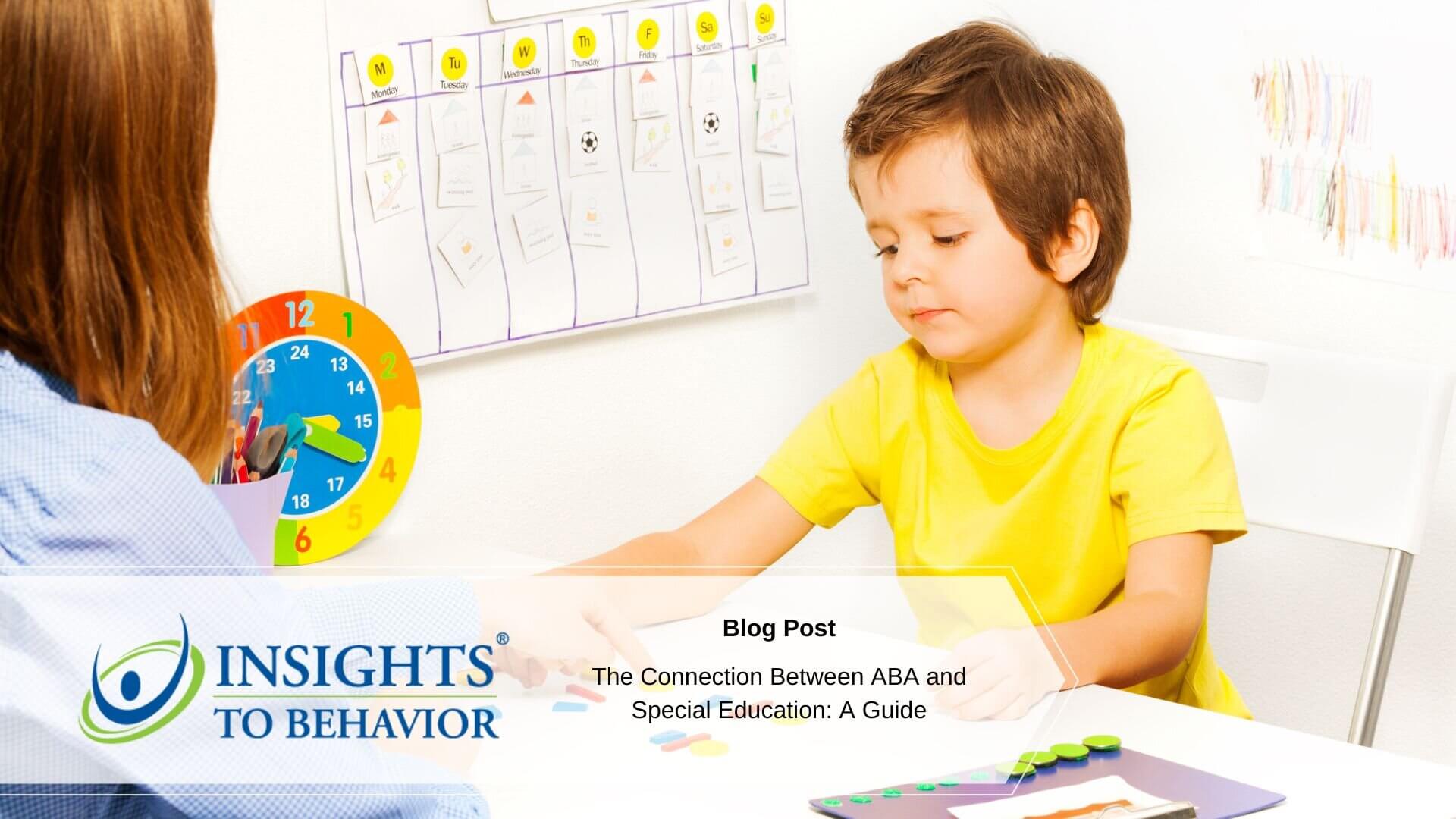Did you know that over 90% of children treated with applied behavior analysis (ABA) significantly improve their social, communication, and academic skills?
ABA is a treatment that helps people with Autism and other developmental disabilities. It is a treatment that has been used for many years to help people with Autism and other developmental disabilities.
When properly implemented, ABA can help children learn new skills and make meaningful changes in their behavior. This guide will teach you how ABA behavioral tips connect with special education.
Please read our guide and learn more about the connection between ABA and special education!
What Is ABA?
Applied Behavior Analysis is an effective way to help children with autism spectrum disorder learn, grow, and do well.
ABA is a way to help people with Autism, learning problems, and other issues. It uses things like rewarding good behavior to help people improve.
What Are the Benefits of ABA?
ABA helps with social communication, doing things that help you take care of yourself (like getting dressed), and reducing problem behaviors. ABA therapy often results in long-term gains that continue even after treatment ends. For these reasons, ABA is considered the “gold standard” of autism treatments.
What Are the Different Types of ABA Therapy?
There are a few different types of ABA therapy. The three most common are discrete trial training (DTT), verbal behavior therapy (VBT), and natural environment training (NET).
Discrete Trial Training
Discrete trial training (DTT) breaks down tasks into small, manageable steps. A therapist will work with a child one step at a time. Once the child has mastered the task, they will move on to the next step.
Verbal Behavior Therapy
Verbal behavior therapy is a type of ABA therapy that uses verbal cues to help children learn new skills. Therapists use verbal praise and other reinforcements to help children learn new skills.
Natural Environment Training
Natural Environment training occurs in the child’s natural environment, such as at home, school, or the community. It’s less structured than other types of ABA therapy. The therapist helps the child practice skills that are part of their everyday routine.
How Can ABA Be Used in Special Education?
ABA can help students with special needs in lots of ways. It can help us understand what the student needs, plan to support good behavior, and create a personal goal just for them.
ADA therapy can help children with Autism learn the skills they need to lead independent lives. Several studies have shown that kids who undergo ADA therapy do better than those who don’t receive this treatment.
ABA therapy is based on the principle of learning through observing and copying others. Through this type of learning, students with ASD can develop communication, social, and academic skills.
What Are Some Common ABA Goals?
ABA therapy can help with a lot of things. Some people use it to learn how to communicate better, stop challenging behaviors, and learn new skills.
ABA therapy can be different for each individual child. The therapist will work with the parents to create goals for their children and make a plan to help them reach those goals.
It is important to remember that ABA therapy is not just for children with Autism Spectrum Disorders (ASD). It’s for any child struggling to meet developmental milestones or displaying challenging behaviors.
How to Find an ABA Therapist for Your Child
If you’re interested in ABA therapy for your child, the first step is to find a qualified ABA therapist.
When looking for an ABA therapist, the most important thing is to find someone qualified and experienced. You can ask your child’s doctor to give you the name of a good ABA therapist. You can also look online or in the phone book for ABA therapists near you.
What To Expect From ABA Therapy Sessions
Once you’ve found a qualified ABA therapist, you’ll need to schedule an initial assessment. The therapist will use this information to understand your child’s needs and create a plan to help them improve.
ABA therapy sessions should be fun and engaging for your child. The therapist will work on your child’s communication, socialization, and behavior skills. You can expect positive changes in your child’s development after completing a course in ABA therapy.
How to Continue ABA Therapy at Home
After your child has completed ABA therapy, you can help them keep developing by using ABA principles in their everyday life.
Here are some simple things you can do at home:
- Provide positive reinforcement for desired behaviors
- Break down tasks into small steps
- Use visual support to help your child understand expectations
The more you know, the more you can help. Parents and teachers can access over 60 hours of K12 behavior management training workshops as part of our individual training membership. These ABA training videos will give you the tools and strategies you need to effectively manage the challenging behaviors of students with ASD in the classroom.
You can also continue to work with an ABA therapist on a consultation basis to ensure your child is progressing and maintaining their new skills.
Professional Behavior Intervention Plans
ABA is a highly effective approach to helping children with ASD and other special needs. It’s an evidence-based approach to providing direct instruction to special-needs students.
ABA may be a good option if you are looking for an approach to help a child with ASD or other special needs. We have many options available to professionals and organizations. ABA training videos are a great way to learn more about ABA therapy and how to effectively manage the challenging behaviors of students with ASD.
School counselors, notable education directors, school psychologists, or behavior interventionists can sign up for our free monthly series on managing student behavior.
If you’re a director of special education, sign up for a 30-minute online personal demo of our software application that helps create legally-defensible behavior intervention plans in under an hour.




